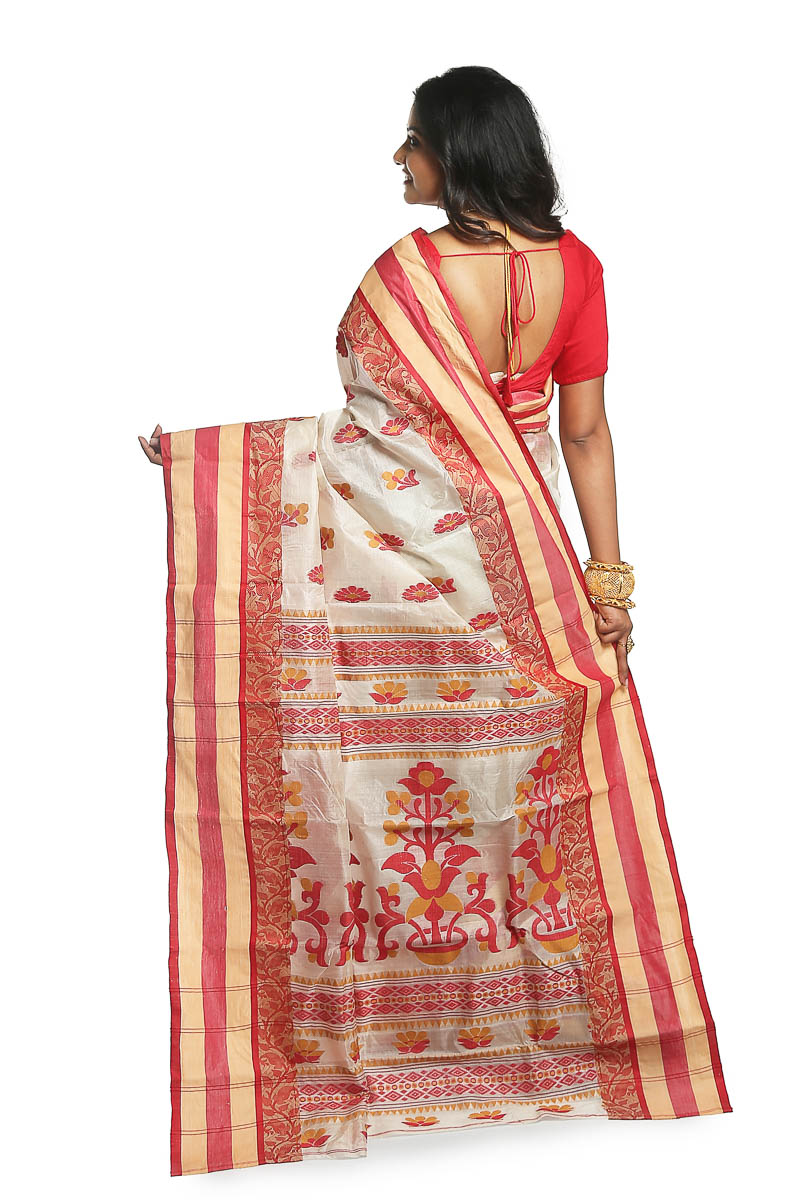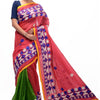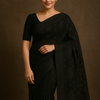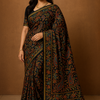How to Pleat Your Saree’s Pallu in 3 Different Styles?

Sarees have been around since times immemorial. They are a piece of clothing that stays evergreen, no matter how much time has passed. The 9 yards can transform your look in a jiffy, but did you also know that there are numerous ways of draping a saree. Some popular styles of wearing the yards are Bengali saree, Gujarati and Maharashtrian. Keep reading to learn how you can wear a pallu in the aforementioned styles.
Recommended: The Most Stunning Red Dhakai Jamdani Bengali Brides Saree Collection
Create Stunning Pallu With Bengali Sarees
Bengali sarees have always been a symbol of timeless beauty and elegance. From the exquisite Tant Silk sarees to the classic muslin saree, these traditional garments are nothing less than works of art. The intricate weaves and motifs used to create these stunning sarees make them truly unique. Maheshwari silk sarees are another popular saree in Bengal known for their lightweight fabric and beautiful designs. The sophisticated charm of these sarees is sure to capture the hearts of many generations to come. One should know how to wear these classic fabrics perfectly to showcase their real beauty. Yet there are many ways to drape a Bengali-style saree. But the Atpoure pallu is one of the most common draping styles among saree wearers. This Bengali-style saree draping is often portrayed in Indian cinema. This pallu style is evergreen and is especially popular in the Bengali wedding assemblage.
How to Pleat -
- Tuck the saree over your belly button and continue wrapping the fabric around your waist.
- Start pleating in a broad accordion from the left of your belly button. Make sure the pleats are broad, once done flatten the fabric, and tuck it into your petticoat.
- Now pull the saree onto the front left and start making thin pleats. The pallu is to be left free and the right corner pulled to the right shoulder. Bring it from below your armpit and secure the corner on the right side of the hip.
- Finally, take hold of the end of the pallu and pull it to the front from under the right hand. Place it over your right shoulder and you are done!
Must Read:The History Of Katha Embroidery: From Ancient India To Modern Times
An Eye Pleasing Pallu In Gujrati Style
The Gujrati style of wearing a pallu is also known as the seedha pallu. The seedha pallu has been in style ever since Madhuri Dixit’s iconic saree look in Didi Tera Dewar Deewana. This pleat gives the saree a lehenga-like look, reason why this style is also known as the lehenga pleat.
How to Pleat -
- Begin by tucking in your saree at your left hip, wrap it around your waist and leave some fabric for the pleats.
- Make vertical pleats with the remaining saree and secure the pallu on your left shoulder with a safety pin.
- Now for the bottom pleat, start pleating the size of a finger stretch and tuck into your petticoat.
- Pull the left side of the pallu taut over your right shoulder and pin in place.
Add A Touch Of Art With Maharashtrian Style Pallu
Maharashtra is famous for its nauvari saree. This style is worn like a dhoti on the bottom while the torso pleats are similar to that of the basic saree. It is true that the Marathi pleating can be a little on the complicated side but the hustle is worth the end result. Maharashtrian style pallu is also very popular among Lavani dancers.
How to Pleat -
- This draping style does not use a petticoat. Wear cycling shorts underneath and tuck the saree’s plane end and turn it right to left. Continue the process along the entire length of the saree, until you reach the starting point again.
- Leave about a yard of fabric from one end of the saree. Grab a few inches of the saree from either side and tie a strong sturdy double knot around the waist.
- Find the shortest end of the saree at the bottom and bring it back from under your leg and tuck it into the knot.
- Now begin pleating the untied part of the fabric and secure it at the waist. Make sure the pleats face left.
- Finally, it’s time to move on to the pallu. Accordion pleat the pallu and bring it to the front from under your right shoulder and secure it to the left.
Wrap Yourself in the Rich Heritage of Bengali Sarees With Banglarsare!
If you're looking to immerse yourself in the evergreen charm of traditional Bengali sarees, look no further than Banglarsare. With a wide range of handcrafted sarees in traditional styles like Dhakai Jamdani, Tant, Baluchari, and Kantha sarees, Banglarsare is your one-stop shop for authentic Bengali sarees. Our collection showcases the finest weaves and craftsmanship from the weavers of Bengal. With our commitment to quality and elegance, you can trust that each saree from Banglarsare is a true masterpiece, worthy of being a part of your wardrobe. Stop thinking and explore our latest collection at Banglarsare’s website today! Now you can get attractive discounts on all products site-wide!
Frequently Asked Questions-
What are Bengali sarees made of?
Bengali sarees are mostly made of materials like cotton, silk, and muslin. The specific material used depends on the type of saree and the occasion it is meant for.
What are the common colors and patterns used in Bengali sarees?
Bengali sarees are known for their vibrant colors and intricate patterns which include red, white, and gold, while patterns range from floral motifs to geometric designs.
What is the significance of the pallu in Bengali sarees?
The pallu often features elaborate designs and motifs and is used to flaunt the ethnicity and beauty of the rich cultural heritage of Bengal.
Which is the best Bengali saree for everyday wear?
Tant sarees are a popular choice for everyday wear due to their light and breathable fabric. They come in a range of colors and designs, making them a versatile and comfortable option for daily wear.






